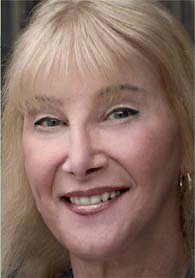Every five years I make a list of the ten toughest problems in laryngology, said Jamie Koufman, MD, Director of the Voice Institute of New York. The number-one problem on the list from the beginning has been scarred vocal folds, and this hasn’t changed.
Explore This Issue
May 2008Dr. Koufman, who has practiced laryngology since 1981 and describes herself as an elder stateswoman in the field of laryngology, has observed that the unique anatomy of the vocal folds makes them difficult to repair once scarred. No treatment yet available will return the scarred vocal fold to normal, she commented, adding that it is one of those things that God makes right the first time, and we can’t make it exactly right again.
 Every five years I make a list of the ten toughest problems in laryngology. The number-one problem on the list from the beginning has been scarred vocal folds, and this hasn’t changed.
Every five years I make a list of the ten toughest problems in laryngology. The number-one problem on the list from the beginning has been scarred vocal folds, and this hasn’t changed.-Jamie Koufman, MD
Explaining this in anatomical terms, Chandra Ivey, MD, Associate Adjunct Surgeon in the Department of Otolaryngology-Head and Neck Surgery at the New York Eye and Ear Infirmary, said that once the fluid layer between the epithelium and vocal ligament has been damaged because of scarring, there is, as of yet, no good way to restore it. That layer, the superficial lamina propria, is needed to keep the vocal folds pliable and maintain good vocal fold vibration.
Although it is difficult, if not impossible, to return the vocal folds to a state of nature once scarred, finding a better way to help patients regain voice functioning disturbed by vocal fold scarring remains a top priority among laryngologists. This is particularly pressing given the frequency of this problem, which often occurs after radiation therapy, surgery, or even after heavy voice use (phonotrauma). Voice problems that develop include hoarseness, voice fatigue, and changes in pitch.
Treatments currently used, including steroids and vocal fold augmentation, are not that effective, and research continues to look at novel ways to treat this difficult problem.
One approach that has been used over the past years with little documented evidence of its safety or efficacy is the use of pulsed-dye laser. Preliminary data from the first study to look at this treatment, however, now provides the first evidence to date on a possible role for this treatment.
A Viable Treatment for Vocal Fold Scarring?
Presenting the data at the January meeting of the Triological Society, Peak Woo, MD, Professor of Otolaryngology at Mount Sinai School of Medicine in New York, reported on the preliminary results of the first 11 patients enrolled in the prospective study to look at the safety and efficacy of pulsed-dye laser treatment for vocal fold scarring (Mortensen MM, et al. Pulse dye laser in the treatment of vocal fold scar: a preliminary report.) Of the 11 patients, vocal fold scarring was due to phonosurgery in seven patients, radiation in two, and partial laryngectomy in two.
Leave a Reply